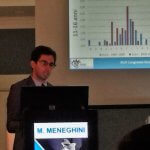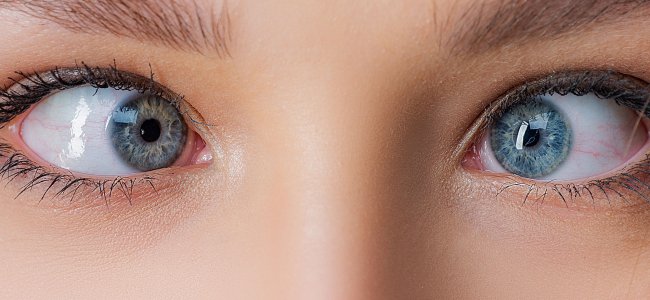Neurodevelopmental disorders: what do they entail?

These disorders manifest themselves in the early years of age, persist in adult life and are characterized by difficulties in the personal, social, scholastic or working spheres.
These disorders occur in the early years of age, persist into adult life, and are characterized by difficulties in the personal, social, school or work sphere.
What are neurodevelopmental disorders?
Among these disorders we find:
- intellectual disability
- communication issues
- autism spectrum disorder
- attention deficit/hyperactivity disorder
- disturbances of movement
- specific learning disorders1
Intellectual disability
Intellectual disability is characterized by deficits in both intellectual and adaptive functioning in the life contexts of the person. A deficit of general mental abilities could be observed, such as:
- reasoning
- problem solving
- planning
- abstract thinking
- judgment skills
- school learning
- learning from experience.
Moreover, there are fragilities in the aspects of daily life such as: communication, social participation, school or work activity, and personal autonomy. If the child does not achieve the expected skills for the given age group, there may be a global developmental delay.
Communication disorders
Communication disorders occur early and include various disorders:
- language: characterized by difficulties in acquiring and using the different modes of communication (verbal, written, gestural or other) due to a lack of understanding or production
- phonetic-phonological: affects the production of speech that affects its intelligibility
- social communication: concerns pragmatic aspects
- fluence with onset in childhood (stuttering).
Fluency disorder includes persistent changes in the cadence of speech, which leads to anxiety or limitation of the effectiveness of communication.
Disorder of the autism spectrum
Autism spectrum disorder is characterized by persistent deficits in social communication and social interaction, including:
- social reciprocity deficit
- non-verbal communication deficit used for interpersonal interactions.
In addition, a restricted and repetitive repertoire of behaviours, interests or activity must be present.
Attention deficit/hyperactivity disorder
Attention deficit/hyperactivity disorder is determined by a persistent pattern of:
- inattention
- disorganisation
- hyperactivity-impulsivity.
Inattention and disorganization involve the inability to keep attention on a task or a game, the apparent lack of listening, the loss of objects and often being careless in everyday life. Hyperactivity-impulsivity implies an excessive level of activity, agitation, inability to sit, interference in the activities of others, and inability to wait. This can also be reflected in the language and organization of thought.
Specific learning disorder
Specific learning disorder is manifested by particular deficits in the ability to perceive or process information efficiently and accurately. Learning difficulties are first observed during the early school years but may not fully express themselves until school demands exceed the individual’s abilities.
The disorder is characterized by persistent and progressive difficulties in learning basic school skills in reading, written expressions and/or calculus. The individual’s performance in school skills is considerably below the average compared to the chronological age. Such difficulties can interfere with school, work, or daily life activities.
Movement disorders
Disturbances of movements include:
- disorder in the development of coordination: determined by the deficit of the acquisition and execution of coordinated motor skills and is expressed by awkwardness, slowness or inaccuracy in the conduct of daily motor activities
- stereotypical motion disorder: repetitive motor behaviours are observed, apparently intentional and aphoristic. Such behaviour interferes with social, school or other activities
- tic disturbances: characterized by the presence of motor or vocal tics; these are stereotypical movements or sudden, rapid and not rhythmic vocalizations. Tic disorders include Tourette’s disorder, a persistent (but transient) tic disorder.
Other disorders of neurodevelopment
Neurodevelopmental disorders with other specification (and those without specification) fall into this category. In both cases these are manifestations with characteristic symptoms of a neurodevelopmental disorder, causing significant discomfort or impairment of functioning in the social, working or other contexts of daily life, predominate, but do not fully meet the criteria for a diagnosis to be made.
The category “neurodevelopmental disorder with other specification” is used when the clinician chooses to communicate the specific reason that the manifestation does not meet the criteria for any specific neurodevelopmental disorder.
The second category is used in situations where the clinician chooses not to specify the reason why the criteria for a specific neurodevelopmental disorder are not met. One understands, in this case, the conditions under which there is insufficient information to place a more specific and accurate diagnosis.
Bibliography
- Istituto superiore di sanità.
- Anffas.
- Disturbi del neurosviluppo estratto dal mini DSM-5”, 2015, Milano, Raffaelo Cortina Editore.

You are free to reproduce this article but you must cite: emianopsia.com, title and link.
You may not use the material for commercial purposes or modify the article to create derivative works.
Read the full Creative Commons license terms at this page.








